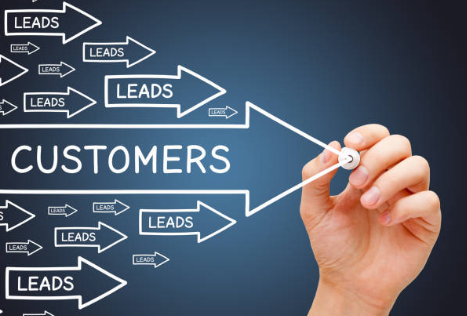Best Practices: Converting Leads into Customers

Congratulations! You’ve acquired a lead from a paid search campaign or a content syndication partner.
What next? Well, now comes the important work to nurture that lead with the goal to eventually convert it into a paying customer.
Before we get into our recommendations for effective lead nurturing, we want to share a few important, relevant statistics:
- According to a study by FocusVision, the average B2B buyer consumes 13 pieces of content before making a decision, with about 8 pieces coming directly from you and the other 5 from third-party sources such as industry publications, peer reviews, or analysts.
- The 2024 B2B Buyer survey illustrates that 75% of buyers prefer to gather information on products on their own and 57% made a purchase in the last year without meeting with any sales team.

So what does this mean and how are these two statistics helpful? It stresses the importance of having an effective lead nurturing process to educate and provide information to your leads. You cannot rush this process and replace a lead nurturing process with your sales team. Buyers prefer to do their own research without talking with your sales team until the buyer is ready and informed.
An effective lead nurturing process for B2B products involves guiding prospects through a well-structured journey that builds trust, educates, and ultimately drives conversions. Because B2B sales cycles are often longer and involve multiple decision-makers, nurturing leads effectively is crucial to maintaining engagement and increasing the likelihood of closing the deal.
Here’s a step-by-step process for effective B2B lead nurturing:
1. Segmentation and Lead Scoring
- Segment Leads Based on Behavior and Demographics: Use CRM and marketing automation tools to segment your leads based on industry, company size, job title, and engagement level (e.g., opened emails, visited product pages). Marketo is one marketing automation tool that many of our clients have great success with.
- Implement Lead Scoring: Assign scores based on how engaged the leads are (e.g., if they downloaded a whitepaper, requested a demo, or clicked on an email link). This helps prioritize outreach to the most promising leads.
2. Personalized Email Campaigns
- Tailor Messaging to Different Stages of the Buyer’s Journey: Create targeted content for leads in different stages—awareness, consideration, and decision.
- Awareness Stage: Provide educational content like blog posts, industry reports, or infographics.
- Consideration Stage: Share case studies, product demos, comparison sheets, or webinars.
- Decision Stage: Offer free trials, consultations, or special offers. Also, include social proof like testimonials and ROI case studies.
- Drip Email Campaigns: Set up automated email sequences that gradually nurture leads. For instance, once someone downloads a piece of content, automatically follow up with related resources or a demo request.
- Personalization: Include the lead’s name, company name, and references to their specific pain points or goals. This creates a more tailored experience and increases engagement.
3. Content Marketing and Thought Leadership
- Educational Content: Use blog posts, whitepapers, case studies, and eBooks to educate leads about the challenges they face and how your product can solve them.
- Webinars and Workshops: Offer webinars or live demos that provide deeper insights into your product’s benefits and how it works in real-world scenarios. This helps potential customers evaluate the product before purchasing.
- Videos: Create product demos, explainer videos, and customer testimonials to showcase your product in action.
4. Engage Through Multiple Channels
- Retargeting Ads: Use retargeting to re-engage website visitors who have shown interest in your product but haven’t converted yet. Display ads based on the content they’ve viewed (e.g., a case study or product page).
- LinkedIn Outreach: As a B2B platform, LinkedIn is a great place to connect with prospects. Personalize your outreach messages and post valuable content regularly to engage your audience.
- Social Media Engagement: Share content regularly on platforms where your target audience hangs out. Actively participate in groups or communities related to your industry.
5. Lead Nurturing via Sales Teams
- Account-Based Marketing (ABM): For high-value prospects, use a more targeted and personalized outreach approach, where sales teams focus on a set of high-priority accounts with tailored content and solutions.
- Sales-Triggered Nurturing: Sales teams can trigger certain follow-up actions based on lead activity, such as requesting a quote or downloading a case study.
6. Timing and Frequency
- Be Strategic About Timing: Space out emails or content offers so you don’t overwhelm your leads. Consider the typical buying cycle for your industry and lead’s position in that cycle.
- Automation for Timing: Use marketing automation tools to send emails at optimal times based on lead activity, time zone, and engagement patterns.
7. Measure Engagement and Optimize
- Track Key Metrics: Monitor open rates, click-through rates, conversion rates, and responses to each communication. These will help gauge how engaged your leads are and whether your content resonates with them.
- A/B Testing: Test subject lines, email content, CTAs, and send times to find out what resonates best with your audience. Optimize content and outreach strategies based on results.
- Lead Behavior Insights: Analyze which content or outreach generated the most engagement, and identify patterns that can inform future lead nurturing strategies.
8. Nurture Until the Right Moment
- Continuous Education: Even after the lead has interacted with sales, continue providing value through content, even if they’re not ready to buy immediately.
- Re-engagement Campaigns: If leads go cold or drop off the radar, implement re-engagement campaigns that include exclusive offers or new content to rekindle their interest.
9. Close the Deal with Social Proof
- Case Studies & Testimonials: Once a lead is in the decision stage, use customer testimonials and detailed case studies to show how your solution has helped businesses similar to theirs.
- Demo and Trial Offers: Offering a free trial or product demo is often the final push that B2B leads need to make a purchase decision.
- Clear and Simple CTAs: Ensure your CTAs (calls-to-action) are clear and direct, guiding leads to the next step—whether it’s scheduling a demo, signing up for a free trial, or discussing pricing.
Key Best Practices:
- Consistency: Nurturing leads requires regular touchpoints without being overly aggressive. A consistent, value-driven approach helps build trust over time.
- Value over Selling: The key to nurturing is providing value first. Make sure your communications are focused on solving problems, not just pushing a product.
- Multichannel Approach: Utilize a variety of channels—email, content, social media, phone calls, and ads—to stay top-of-mind for your leads.
- CRM Integration: Use your CRM to track interactions and ensure that the nurturing process is automated, timely, and personalized.
By focusing on building relationships, educating your leads, and providing the right content at the right time, your B2B lead nurturing process will help convert potential customers into loyal, long-term clients.
Would you like more detail on any of these strategies? Contact TechPRO if you would like to hear how we can help with your lead generation and sales pipeline.


